Samsung Tablets vs. iPads: A Comprehensive Comparison
In the ever-evolving world of technology, tablets have carved out a prominent space for themselves, bridging the gap between smartphones and laptops. Two dominant players in the tablet market are Apple, with its iPad range, and Samsung, with its Galaxy Tab series. Both brands have loyal followings and offer a broad spectrum of devices catering to different users’ needs. This article delves deep into the comparison between Samsung tablets and iPads, examining their design, hardware, software, performance, ecosystem, value, and more to help you make an informed decision.
1. Design and Build Quality
Apple iPad
Apple is renowned for its minimalist, premium design language. iPads, from the entry-level models to the high-end iPad Pro, feature sleek aluminum bodies, slim profiles, and high-quality finishes. The uniformity of design across the iPad lineup ensures that even the budget iPad feels premium. The iPad Pro, in particular, boasts ultra-thin bezels, a flat-edge design, and is available in multiple sizes (11-inch and 12.9-inch).
Samsung Tablets
Samsung’s Galaxy Tab lineup ranges from affordable models like the Galaxy Tab A series to the premium Galaxy Tab S series. The higher-end Galaxy Tab S9 Ultra, for example, features a sleek metal build, super-thin bezels, and a large AMOLED display, rivalling the iPad Pro in terms of aesthetics and build quality. Even mid-range Samsung tablets have improved significantly in materials and finish, though entry-level models may use more plastic.
Conclusion: Both brands offer excellent build quality, especially in their flagship models. Apple maintains a more consistent premium feel across its entire range, while Samsung reserves its most luxurious designs for its top-tier tablets.
2. Display Technology
Apple iPad
Entry-level iPads: Use IPS LCD panels with good color accuracy and brightness.
iPad Air and iPad Pro: The iPad Air uses a high-quality Liquid Retina display (LCD), while the iPad Pro uses a Liquid Retina XDR display (mini-LED on the 12.9-inch model). The ProMotion technology offers a 120Hz refresh rate for smooth scrolling and responsiveness.
Samsung Tablets
Galaxy Tab A series: Generally feature TFT or basic LCD panels.
Galaxy Tab S series: Known for their stunning Super AMOLED displays, offering deep blacks, vibrant colors, and high contrast. The Tab S9 Ultra, for example, features a 14.6-inch Dynamic AMOLED 2X display with a 120Hz refresh rate, HDR10+ support, and exceptional brightness.
Conclusion: Samsung’s AMOLED technology gives it an edge in color vibrancy and contrast, especially in the flagship models. Apple’s mini-LED and LCD panels are superb, but Samsung’s displays are often praised as the best in the industry.

3. Performance and Hardware
Apple iPad
Apple’s custom silicon chips have set industry standards for performance:
Entry-level iPad: Uses older A-series chips (e.g., A14 Bionic).
iPad Air: Features the M1 chip, previously found in MacBooks.
iPad Pro: Boasts the M2 chip, delivering laptop-class performance.
RAM and storage options vary, with the iPad Pro offering up to 16GB RAM and 2TB storage.
Samsung Tablets
Mid-range Tabs: Use Qualcomm Snapdragon or Exynos processors, suitable for everyday tasks.
Galaxy Tab S series: The S9 series uses the latest Snapdragon 8 Gen 2 “for Galaxy” chip, offering top-tier performance, multi-tasking, and gaming capabilities. RAM options go up to 16GB, and storage up to 1TB (expandable via microSD on some models).
Conclusion: Both brands offer exceptional performance in their flagship models. Apple’s M-series chips are generally ahead in raw power and efficiency, but Samsung’s latest Snapdragon chips close the gap, especially for Android apps and multitasking.
4. Operating System and User Interface
Apple iPad (iPadOS)
iPadOS is a tablet-optimized version of iOS, offering a smooth, intuitive interface. Key features include:
Split View and Slide Over for multitasking.
Universal Control and Stage Manager (on newer iPads) for advanced multitasking.
Seamless integration with macOS and iOS devices.
Extensive library of tablet-optimized apps.
Samsung Tablets (Android with One UI / DeX)
Samsung tablets run Android with Samsung’s One UI skin, offering:
Multi-window support and pop-up view for multitasking.
Samsung DeX mode: Turns the tablet into a desktop-like experience, especially useful when connected to a keyboard or external monitor.
Customization options and widgets.
Access to Google Play Store and Samsung’s own app ecosystem.
Conclusion: iPadOS is more polished and better supported by third-party developers for tablet-specific apps. Samsung’s DeX is a unique advantage for productivity, giving a desktop-like experience that iPads can’t fully replicate.
5. App Ecosystem
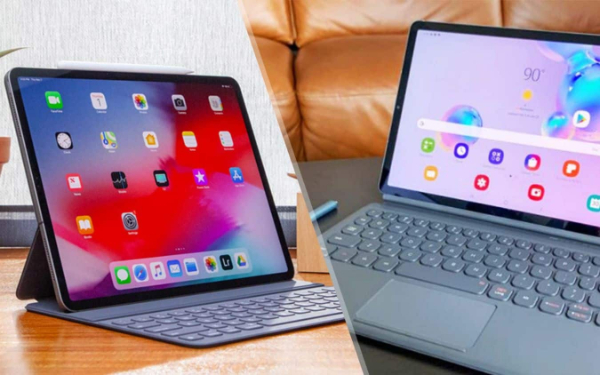
Apple iPad
The App Store boasts a vast array of high-quality, tablet-optimized apps for productivity, creativity, education, and entertainment. Many creative professionals favor iPads for apps like Procreate, LumaFusion, and Affinity Photo, which are either exclusive or perform better on iPadOS.
Samsung Tablets
While Android’s app ecosystem is vast, not all apps are optimized for large-screen tablets. Samsung’s own apps and partnerships (e.g., with Microsoft Office) enhance productivity, but the overall selection of tablet-optimized apps is less robust than Apple’s.
Conclusion: Apple leads in app quality and optimization for tablets. Samsung is improving, but Android still lags behind in this area.
6. Accessories and Expandability
Apple iPad
Apple Pencil: The second-generation Pencil offers industry-leading latency and precision, especially on iPad Pro and Air.
Magic Keyboard: Turns the iPad Pro/Air into a true laptop replacement, with a trackpad and backlit keys.
Third-party accessories: Extensive ecosystem of cases, stands, and adapters.
Samsung Tablets
S Pen: Included with many Galaxy Tab S models, the S Pen is excellent for note-taking and drawing, with low latency and air actions.
Book Cover Keyboard: Samsung offers its own keyboard cases, and DeX mode enhances the productivity experience.
Expandable storage: Many Samsung tablets support microSD cards, a feature absent in iPads.
Conclusion: Both brands offer excellent stylus and keyboard options. Samsung’s inclusion of the S Pen and expandable storage are notable advantages.
7. Productivity and Multitasking
Apple iPad
With features like Split View, Slide Over, and the new Stage Manager (on M1/M2 iPads), Apple has turned iPads into powerful productivity machines. The Magic Keyboard and Apple Pencil further enhance the experience.
Samsung Tablets
Samsung’s multitasking is robust, with multi-window support and DeX mode, which allows for a desktop-like environment. This is particularly useful for users who want to use their tablet as a laptop replacement.
Conclusion: Samsung’s DeX mode is a unique productivity tool, but iPadOS’s app ecosystem and seamless integration with macOS give it an edge for many professionals.
8. Media Consumption
Apple iPad
iPads offer excellent displays and speakers, making them great for watching movies, reading, and gaming. The App Store provides access to all major streaming services and a vast library of games.
Samsung Tablets
Samsung’s AMOLED displays are arguably the best for media consumption, with deeper blacks and more vibrant colors. Many Galaxy Tabs have quad speakers tuned by AKG, providing immersive sound.
Conclusion: Samsung’s AMOLED screens and sound quality make Galaxy Tabs superb for media consumption. iPads are no slouch, but Samsung has a slight edge here.
9. Battery Life
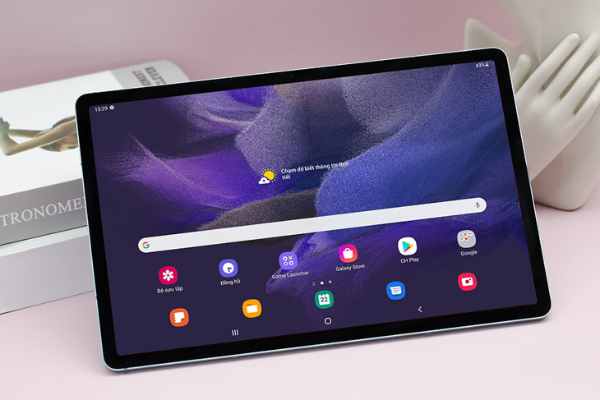
Apple iPad
iPads are known for their reliable battery life, typically offering 8-12 hours of mixed usage. Apple’s efficient chips help maximize longevity.
Samsung Tablets
Samsung tablets also offer strong battery life, with some models featuring larger batteries due to their bigger displays. Fast charging is available on many models.
Conclusion: Both brands offer all-day battery life. Samsung’s fast charging is a plus, but actual longevity is similar.
10. Price and Value
Apple iPad
Entry-level iPad: Starts at a competitive price.
iPad Air: Mid-range, balancing power and price.
iPad Pro: Premium pricing, especially with accessories.
Apple’s tablets hold their value well and receive long-term software updates.
Samsung Tablets
Galaxy Tab A series: Very affordable.
Galaxy Tab S series: Premium pricing, but often bundled with S Pen and sometimes keyboard.
Frequent discounts: Samsung tablets often see price drops and deals.
Conclusion: Samsung offers more variety in pricing and frequent discounts. Apple’s long-term support and resale value are strong points.
11. Longevity and Software Updates
Apple iPad
Apple is unmatched in software support, with iPads receiving updates for 5+ years.
Samsung Tablets
Samsung has improved, now offering up to 4 years of OS upgrades and 5 years of security updates on flagship models.
Conclusion: Apple still leads, but Samsung is closing the gap.
12. Ecosystem Integration
Apple iPad
Seamless integration with iPhone, Mac, Apple Watch, and AirPods. Features like Handoff, AirDrop, and Universal Clipboard create a unified experience.
Samsung Tablets
Works well with other Samsung devices (phones, watches, TVs). Samsung Flow and Quick Share offer some continuity, but the ecosystem isn’t as tightly integrated as Apple’s.
Conclusion: Apple’s ecosystem is more cohesive, but Samsung is improving, especially for users invested in its products.
13. Security and Privacy
Apple iPad
Apple emphasizes privacy, with on-device processing for many tasks, regular security updates, and robust privacy controls.
Samsung Tablets
Samsung offers Knox security, secure folders, and biometric authentication. Android’s open nature means more flexibility but potentially more vulnerability.
Conclusion: Both are secure, but Apple’s privacy-first approach is a differentiator.
14. Who Should Buy Which?
Choose an iPad if:
You want the best selection of tablet-optimized apps.
You’re already invested in the Apple ecosystem.
You prioritize software updates and long-term support.
You’re a creative professional needing top-tier creative apps.
Choose a Samsung Tablet if:
You want the best display for media consumption.
You value multitasking and a desktop-like experience (DeX).
You need expandable storage.
You want a stylus included in the box.
Both Samsung tablets and iPads are excellent choices, each with their unique strengths. iPads excel in app quality, software support, and ecosystem integration, making them ideal for professionals, students, and creatives. Samsung tablets, especially the Galaxy Tab S series, stand out with their superior displays, multitasking features, and value for money.
Ultimately, the best choice depends on your specific needs, budget, and the ecosystem you’re most comfortable with. By weighing the factors outlined above, you’ll be well-equipped to choose the tablet that’s right for you.
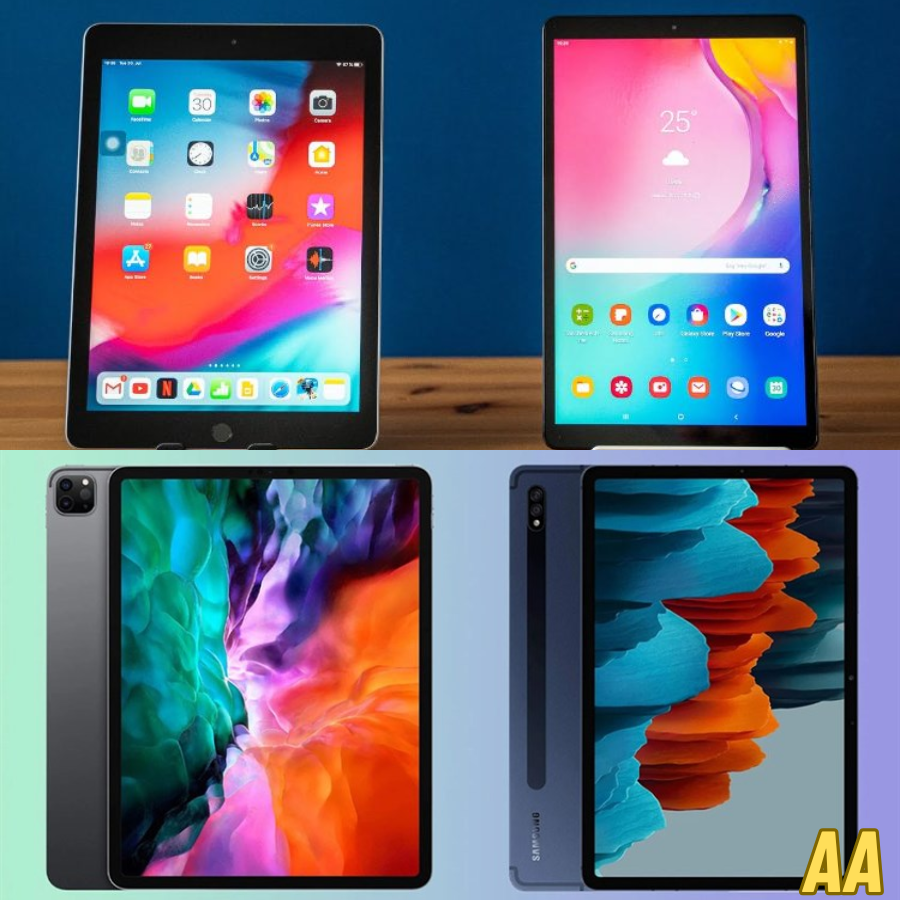
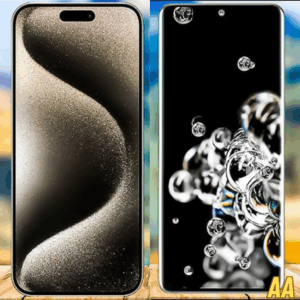

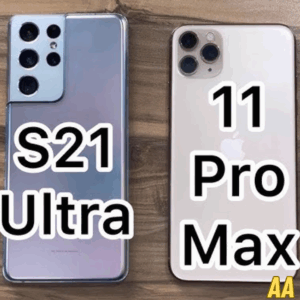
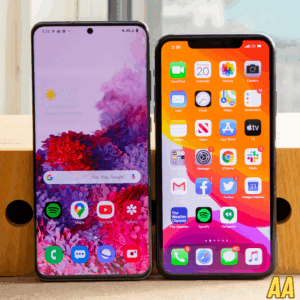
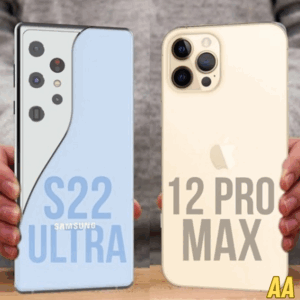

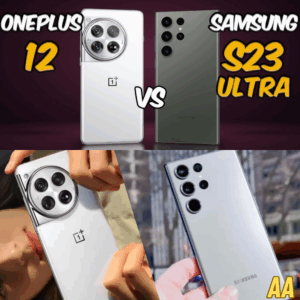
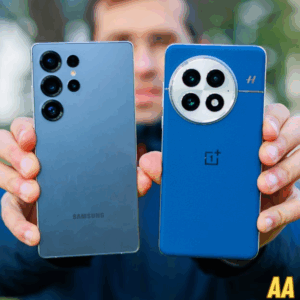
Trackbacks and Pingbacks